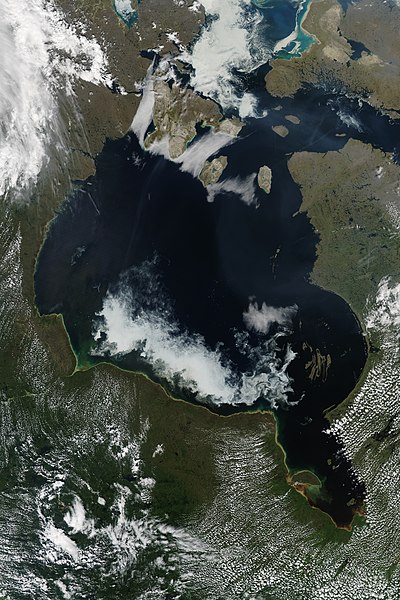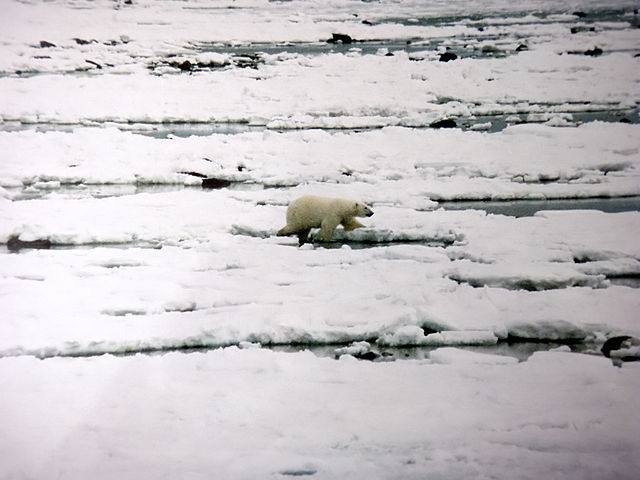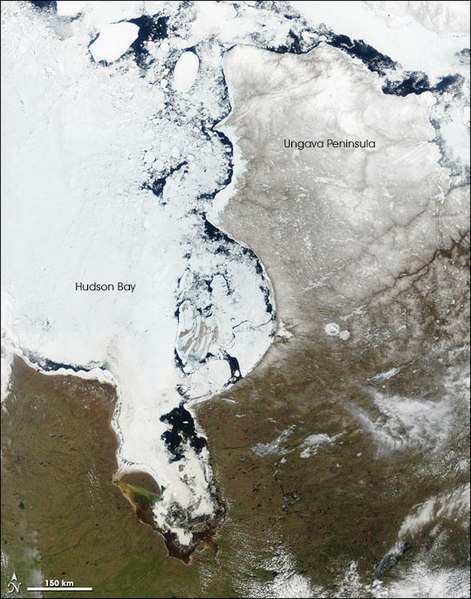The Port of Churchill is a privately-owned port on Hudson Bay in Churchill, Manitoba, Canada. Routes from the port connect to the North Atlantic through the Hudson Strait. As of 2008, the port had four deep-sea berths capable of handling Panamax-size vessels for the loading and unloading of grain, bulk commodities, general cargo, and tanker vessels. The port is connected to the Hudson Bay Railway, which shares the same parent company, and cargo connections are made with the Canadian National Railway system at HBR's southern terminus in The Pas. It is the only port of its size and scope in Canada that does not connect directly to the country's road system; all goods shipped overland to and from the port must travel by rail.
Aerial view of the port in 1996
A political cartoon by Arch Dale depicting the Montreal Gazette and Ottawa Journal laughing at the idea of Churchill becoming a grain port in 1926, and being stunned at the results in 1931.
View of the port's facilities and grain elevators from the east.
The rail station at the Port of Churchill
Hudson Bay, sometimes called Hudson's Bay, is a large body of saltwater in northeastern Canada with a surface area of 1,230,000 km2 (470,000 sq mi). It is located north of Ontario, west of Quebec, northeast of Manitoba, and southeast of Nunavut, but politically entirely part of Nunavut. It is an inland marginal sea of the Arctic Ocean. The Hudson Strait provides a connection between the Labrador Sea and the Atlantic Ocean in the northeast, while the Foxe Channel connects the Hudson Bay with the Arctic Ocean in the north. It drains a very large area, about 3,861,400 km2 (1,490,900 sq mi), that includes parts of southeastern Nunavut, Alberta, Saskatchewan, Ontario, Quebec, all of Manitoba, and parts of the U.S. states of North Dakota, South Dakota, Minnesota, and Montana. Hudson Bay's southern arm is called James Bay.
Hudson Bay, Canada
Polar bear walks on newly formed ice in early November at Hudson Bay.
In late spring (May), large chunks of ice float near the eastern shore of the bay, while the centre of the bay remains frozen to the west. Between 1971 and 2007, the length of the ice-free season increased by about seven days in the southwestern part of the Hudson Bay, historically the last area to thaw.







